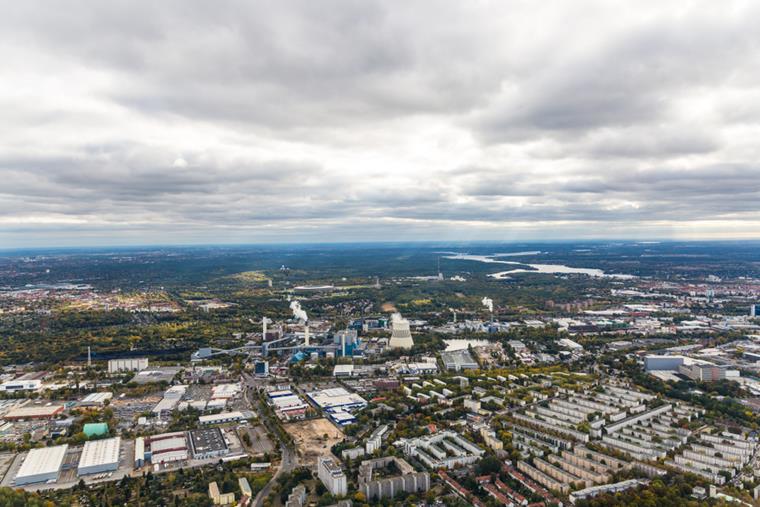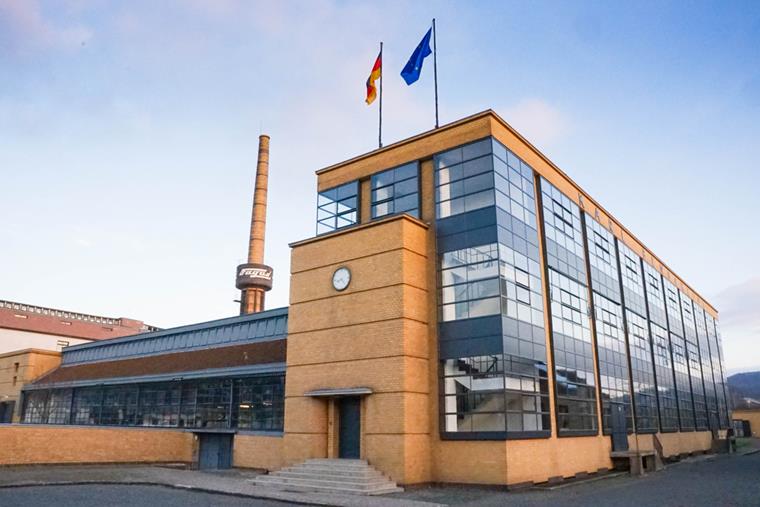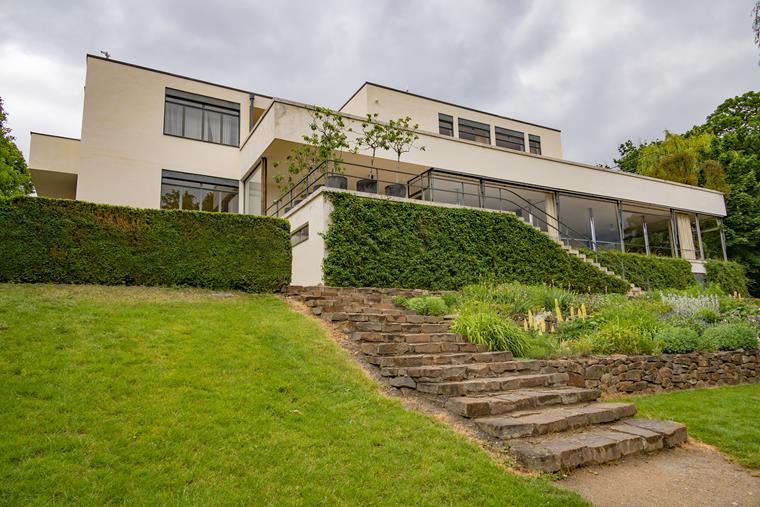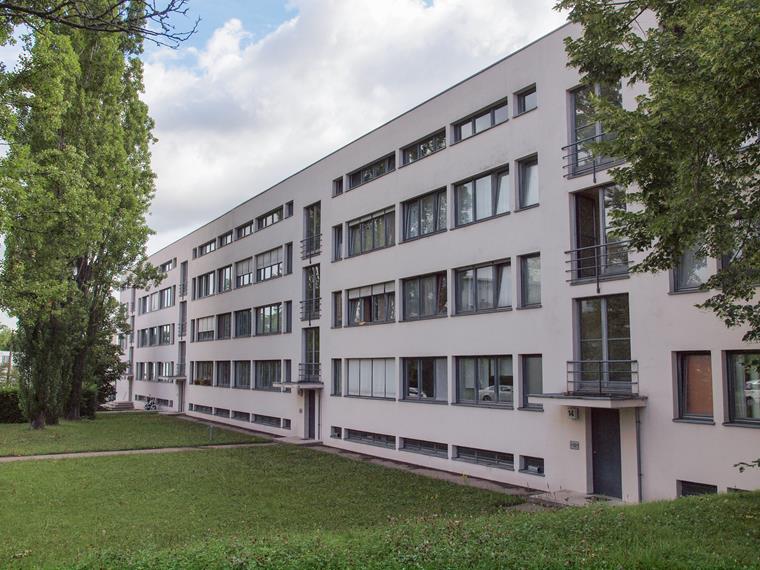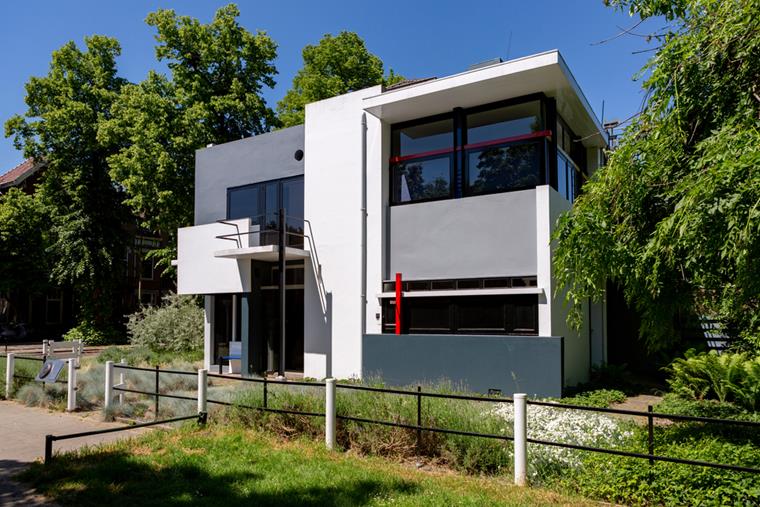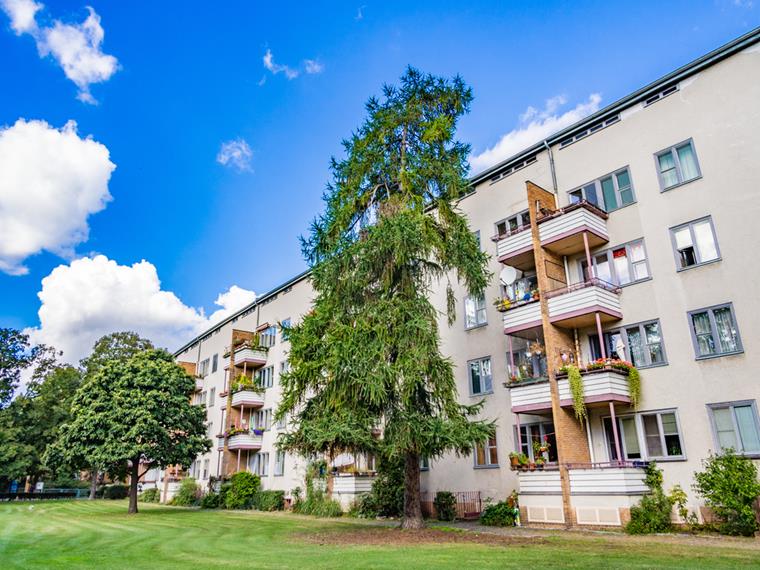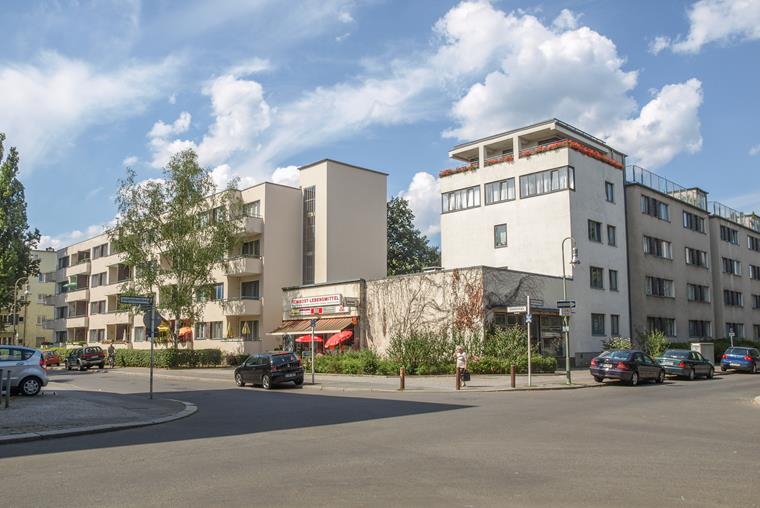Playful architecture and pompous facades characterized many past eras for centuries, if not millennia. This gradually changed with the transition into the 20th century. Cities were attracting more and more people, and the numerous workers in the factories needed housing – affordable housing.
As the population, especially in the lower classes of society, virtually exploded, residential construction could hardly cope with it. At the same time, this period has a heavy heritage: World War I, which shook Europe to its very foundations. Functional postwar buildings shaped the image of industrial cities.
It was no longer about creating monuments for the future, but about a space where people could live well as inexpensively as possible. Thus, the "Neues Bauen" (New Building) architectural movement arose between 1910 and 1930.
Entire urban development projects were implemented, and only rarely were they about specific individual structures. The big picture was the focus. In this blog post, we take a closer look at the changes that "Neues Bauen" brought with it, and what influence it still has on the construction industry today. What can we learn from the architects and engineers of that time? Be excited!
Basic Principles of Neues Bauen
The political and social changes around World War I and the following years required a new understanding of architecture and engineering.
Typical features of "Neues Bauen" can be summarized in three areas. They shaped the buildings of that time and still have a strong influence on modern architecture.
1) Materials and Technology
New industrial materials were mainly used to realize construction projects. This includes glass, steel, concrete, and brick. This way, it was possible to construct larger buildings or entire building complexes. In contrast to previous architectural periods, the Neues Bauen followers stuck to clear structuring with straight lines.
Simple cubic shapes, open floor plans, and free-standing walls had an advantage: They were inexpensive, uniform, and still provided plenty of space and living comfort. This form of construction was inspired, for example, by the island architecture of Greece.
2) Functionality
The statement "form follows function" finds clear and detailed application in Neues Bauen. Every observer should recognize the function of the building from its shape. A factory looked like a typical factory, and a residential building, like a typical residential building.
Decorations played a secondary role and architects played with clearly defined geometric surfaces, such as squares and rectangles. Architects returned to the essentials of a building. More important than elaborate decoration was the building's usability for its respective purpose.
3) Social Responsibility
Characterized by factories with thousands of employees, housing construction was naturally one of the main pillars of Neues Bauen. As many apartments as possible had to be built near the factory as quickly as possible. Entire districts were built in front of the factories and completed within a few years.
The general public, which was growing rapidly, needed to have easy access to housing, with all the shops they needed, and a short commute to work. This resulted in the typical subsidized housing complex of the postwar period.
Examples of Neues Bauen
Let's look at some of the construction projects from this period. Our journey takes us across Europe and to both individual buildings and the aforementioned urban districts that provided social housing.
Fagus Factory
Alfeld, Germany
Just a few years after the turn of the 20th century, company founder Carl Benscheidt commissioned the young architect Walter Gropius to work on a very special project. A shoe last factory was to be built in Alfeld. Gropius was to incorporate new ideas and innovations, and thus his first work arose: straight lines, large window surfaces, and the use of industrial building materials were the starting shot for a new way of building.
The Fagus Factory is considered the first construction project of the Neues Bauen movement. A steel and glass structure was unusual for factories, and the column-free, glazed corners are the main reasons that it clearly stands out from its contemporaries.
Since its completion in 1911, production has been continuous here. In this registered architectural monument, measurement and fire protection systems are also produced, in addition to the eponymous Fagus shoe lasts. Extensive renovations between 1982 and 2002 allowed the factory to shine in its former splendor and in 2011, on the occasion of its centenary, the Fagus Factory was included in the list of UNESCO World Heritage Sites.
Villa Tugendhat
Brno, Czech Republic
The construction of residential buildings also showed the strong influence of the "Neues Bauen" movement. German architect Ludwig Mies van der Rohe designed a mansion in Brno – it is still a symbol of minimalism and timeless elegance.
From 1929 to 1930, a unique house was built for the client, the Tugendhat family. What is special here is more than this architectural purity due to a uniform structure and an open space concept. The idyllic location surrounded by nature and its sober yet elegant design also contribute to its captivating appearance.
After a wide variety of uses, including an orthopedic department of a hospital and a gym, it only regained importance in the late 20th century and was transferred to the responsibility of the Brno City Museum as architectural heritage of the Neues Bauen movement.
To this day, it is considered an icon of Modernist residential construction in Brno. As of 2001, Villa Tugendhat is the only building of modern architecture in the Czech Republic included on the UNESCO World Heritage List. After extensive renovations, the house was opened to the public in 2012.
Weissenhof Estate
Stuttgart, Germany
This Weissenhof Estate is not a small district that has grown over time, but the result of a world exhibition on the subject of Neues Bauen. The work of leading architects of the time was presented here, including Walter Gropius, Le Corbusier, and Mies van der Rohe. Innovative living concepts created a showcase, so to speak, through which the ideas of Neues Bauen could be viewed.
The Deutscher Werkbund association worked closely with the architects, and by using materials that were innovative at the time, such as steel and concrete, 21 buildings with a total of 63 apartments were built in a construction time of only 21 weeks.
During the National Socialist period, the settlement was nicknamed the "Arab village" due to the white roof terraces, and in order to preserve the ideal cityscape, the houses were to be demolished. But fortunately, it didn't come to that. This project was stopped by the start of the war.
Some of the buildings were partially destroyed during World War II and greatly altered during reconstruction, such as by adding duopitch roof structures. In 1958, the settlement was listed as a monument, and later, in the 1980s, the remaining buildings were extensively renovated.
The name of the settlement, Weissenhof, comes from a baker. In 1779, Georg Philipp Weiß built an agricultural factory (dairy farm). Not only the residential estate, but also the entire Weissenhof district of Stuttgart, is named after him.
Rietveld Schröder House
Utrecht, Netherlands
The Rietveld Schröder house was designed in 1924 by well-known furniture designer Gerrit Rietveld for Truus Schröder, a widow with three children. She lived in this very special composition of living space until her death in 1985. After her death, the house was given to the public, and thus opened to visitors.
Rietveld was an important member of the Dutch art movement De Stijl. It was named after a magazine of modern art founded in 1917, and produced a style that broke with the old Dutch tradition in construction. Schröder wanted exactly such a house: simple, modern, and in no way traditional. For the furniture designer, it was a dream come true to be able to transfer his ideas for a modern style to a house.
The Rietveld Schröder house is considered the architectural highlight of the De Stijl movement and is still an iconic example of Neues Bauen architecture today. The Cubist shape, the merging of indoor and outdoor space, as well as the straight lines and use of primary colors are the defining features of this architectural movement.
Siemensstadt Settlement
Berlin, Germany
Another well-known name for this district is "Ring Settlement", named after the architectural association "Der Ring", to which most of those involved belonged. Today, this residential complex is located in the Charlottenburg-Nord district of Berlin. It was built between 1929 and 1931, originally planned to provide the workers of the neighboring Siemens factory with affordable housing.
However, due to necessary financial cuts, a housing development project arose which was meant, above all, to create the greatest possible amount of living space as cheaply as possible, without reducing hygiene or comfort standards. Therefore, the city tendered a contract and quickly found interested architects: mostly supporters of modern construction.
In the "Ring", there was agreement that each of the buildings should look different in detail. Nevertheless, the apartment blocks should be based on simplicity, clarity, and honesty as basic principles. The aim was to deliberately move away from ornamentation, decorations, and generally from the pompous architecture of the Empire.
The Ring Settlement in Siemensstadt was an experiment for new housing concepts. The orientation of the apartment blocks to the street, the narrow access paths, and the shallow depth were deliberately designed to ensure that people could feel comfortable there. The aim was to build up as little of the meadow area as possible; the buildings were only deep enough so that each apartment had windows on both sides and thus enough light throughout the day.
Various well-known architects were responsible for each area of the settlement. As a result, the buildings have different, sometimes somewhat bizarre, names. Architect Otto Bartning, for example, created a long residential building with the somewhat irrelevant name of "Langer Jammer" (Long Misery). In July 2008, the Siemensstadt settlement was included in the list of UNESCO World Heritage Sites as one of six Berlin Modernism Housing Estates.
Summary: Neues Bauen
With Neues Bauen, architects of the early 20th century finally turned their backs on the traditions of the historic architectural style. They focused on clear lines, simple shapes, and innovative materials in order to create as much functional living space as possible quickly and inexpensively, where the general population could live well.
After all, there were a lot of social, societal, and, of course, technological changes at that time: The construction industry, especially in residential construction, should be in no way inferior.
What can we learn from Neues Bauen?
Neues Bauen was a formative movement for the development of our modern architecture. Here, the foundation was laid for many contemporary architectural styles that we will discuss in more detail in future blog posts. The guiding and basic principles of this architectural movement can still inspire us today to create affordable and high-quality housing without too much land development or investment costs that are too high.
Due to the close coupling of form and function, we can design buildings to serve their purpose optimally. In addition to aesthetic design, every corner and every detail should have a function that improves the lives of the residents. This requirement would make it possible to once again focus more on building for the people who will later live in these houses, rather than for the financial wishes and ideas of investors, as is often the case today, unfortunately.
Another important point is material innovation. Neues Bauen introduced modern materials, such as steel, glass, and concrete. Construction methods that were experimental at the time were used in order to be able to meet all the demands of modern living space, without losing track of the goals of socially fair housing.
Today's engineers have mainly used the same building material for decades: reinforced concrete. This, even though the poor environmental record of concrete has long been known, and there are materials with better properties on the market. Of course, this is primarily a financial problem. Reinforced concrete happens to be cheap and, as already mentioned, residential buildings have long been built more for investors than for future residents. The aim is to have apartments built as cheaply as possible that can be rented as expensively as possible. Unfortunately, the environmental and social aspects often play a minor role.
Hardly anyone dares to use more modern methods and building materials. Everything remains exactly as it is: The construction industry is very sluggish and unwilling to change. Fortunately, there are also bright moments in the construction industry, and you can read about many of them in our other blog posts. Thus, it is to be hoped that the advantages of new materials and technologies will one day prevail, as they did 100 years ago.
